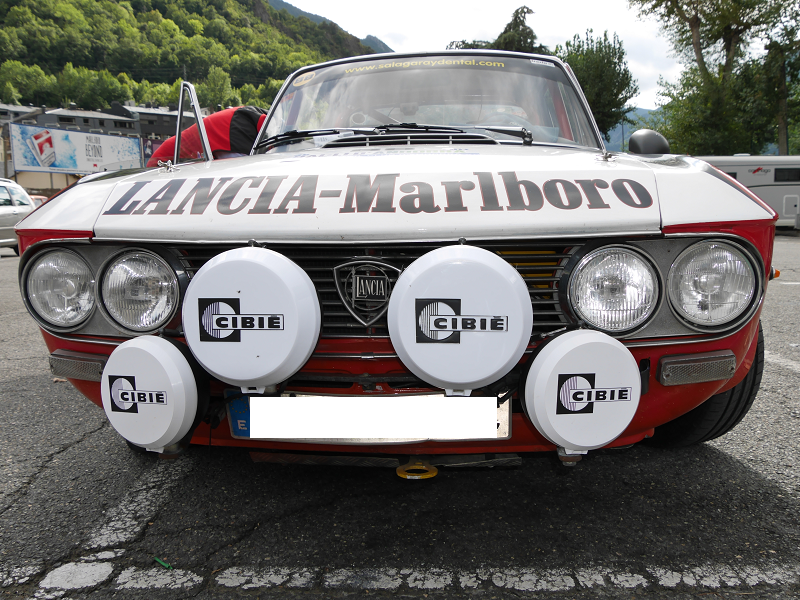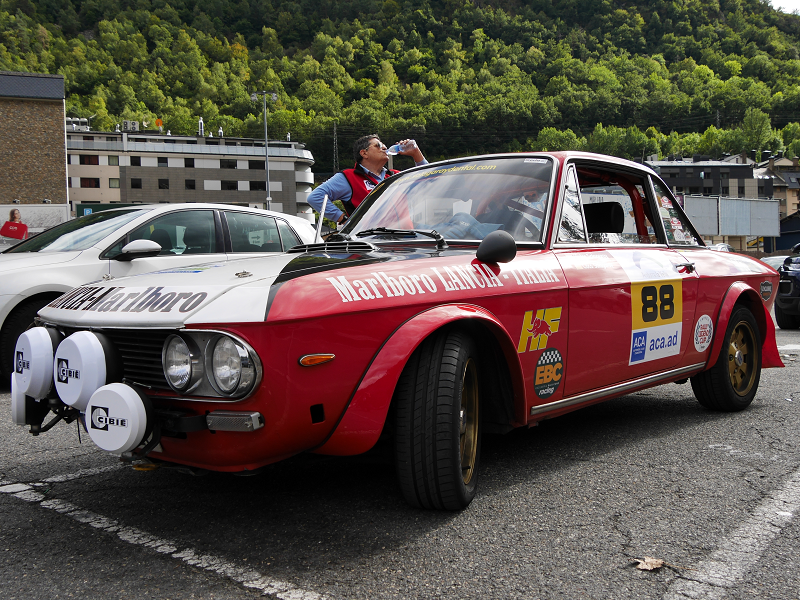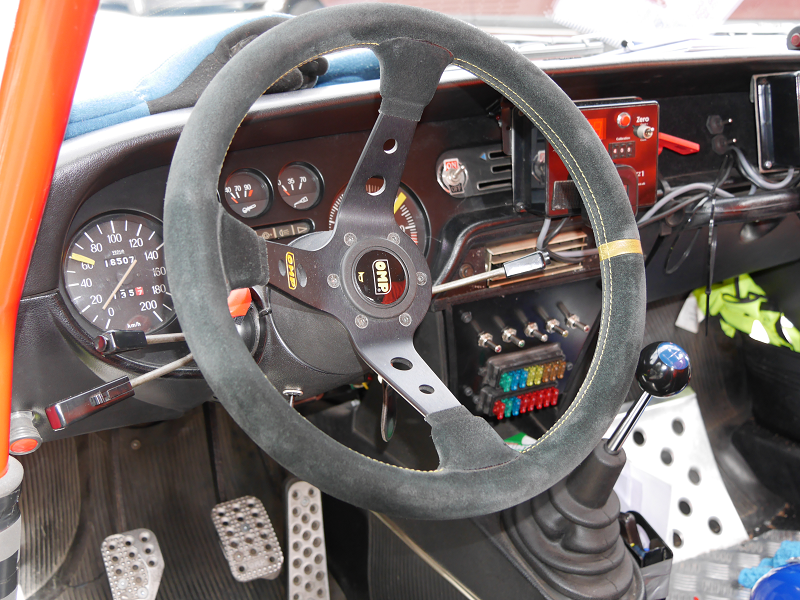Lancia Fulvia rally version
The Lancia Fulvia (Tipo 818) is an automobile produced by Lancia between 1963 and 1976. Named after Via Fulvia, the Roman road leading from Tortona to Turin, it was introduced at the Geneva Motor Show in 1963 and manufactured in three variants: Berlina 4-door saloon, 2-door Coupé, and Sport, an alternative fastback coupé designed and built by Zagato on the Coupé floorpan.
Fulvias are noted for their role in motorsport history, including a 1972 win of the International Rally Championship. Road & Track described the Fulvia as “a precision motorcar, an engineering tour de force”.
The Fulvia’s narrow-angle DOHC Lancia V4 engine was mounted well forward at a 45° angle. A new design, by Zaccone Mina, its unusually narrow 12° V allowed a single cylinder head to cover all the cylinders, with one cam each for intake and exhaust valves.
Displacement started out at just 1091 cc, with a 72 mm bore and 67 mm stroke. Fitted with a single carburettor it produces 58 CV (43 kW; 57 hp). A higher (9.0:1) compression ratio and twin Solex carburettors raised power to 71 CV (52 kW; 70 hp) soon after.
The engine was bored to 76 mm for the 1216 ccHF model. With additional tuning output was raised from 80 to 88 CV (59 to 65 kW; 79 to 87 hp).
The engine was re-engineered with a slightly narrower bank angle (from 12°53’28” down to 12°45’28”) and longer (69.7 mm) stroke for 1967. Three displacements were produced: 1199 cc (74 mm bore), 1231 cc (75 mm bore), and 1298 cc (77 mm bore). The new 1298 cc engine was produced in two versions; the type 818.302 produced 87 bhp (65 kW) at 6000 rpm and was fitted to first series Coupés, Sports and Berlina GTE and later to the second Series Berlina. The Type 818.303 was first produced with 92 CV (68 kW; 91 hp) and was fitted to the first series Coupé Rallye S and Sport S. For the second Series Coupé and Sport power was slightly reduced to 90 CV (66 kW; 89 hp) at 6000 rpm. The 1199 cc engine was only fitted to the Berlina sold in Greece.
The engine was completely reworked for the new 1.6 HF with an even-narrower angle (now 11°20′) and longer 75 mm stroke combined with a bore of 82 mm gave it a displacement of 1584 cc, and power ranged from 115 to 132 CV (85 to 97 kW; 113 to 130 hp) depending on tune.














